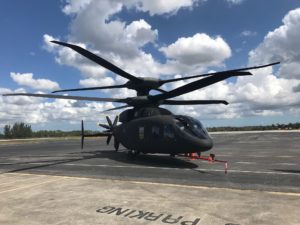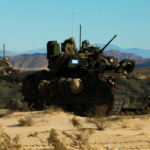
WEST PALM BEACH, Fla.--Sikorsky [LMT] and Boeing’s [BA] SB-1 Defiant helicopter offering for the Army’s Future Long Range Assault Aircraft (FLRAA) program has gathered 11 flight test hours to date, in addition to thousands of hours from component testing and simulation data, officials told reporters ahead of the platform’s first public flight on Thursday. With FLRAA headed toward a downselect decision in March for the program’s competitive demonstration phase, company officials said the SB-1 Defiant has now been flying at…

 By
By 











